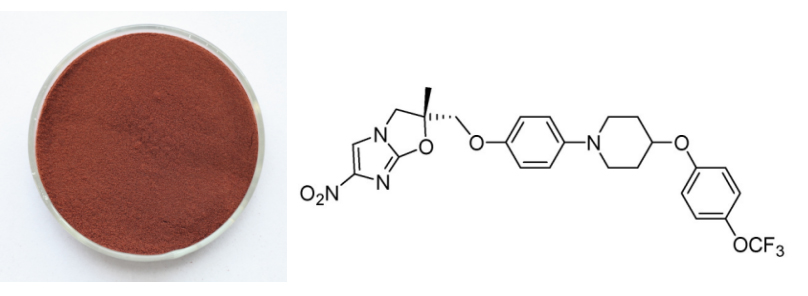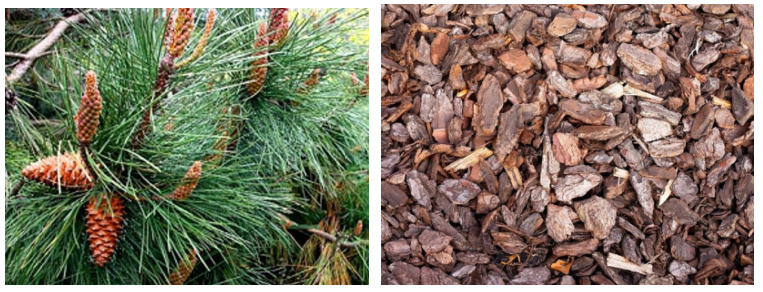13 Years Manufacturer Pine bark Extract Manufacturer in Malaysia
13 Years Manufacturer Pine bark Extract Manufacturer in Malaysia Detail:
[Latin Name] Pinus pinaster.
[Specification] OPC ≥ 95%
[Appearance] Red brown fine powder
Plant Part Used: Bark
[Particle size] 80Mesh
[Loss on drying] ≤5.0%
[Heavy Metal] ≤10PPM
[Storage] Store in cool & dry area, keep away from the direct light and heat.
[Shelf life] 24 Months
[Package] Packed in paper-drums and two plastic-bags inside.
[Net weight] 25kgs/drum
[What is Pine bark?]
Pine bark, botanical name Pinus pinaster, is a maritime pine native to southwest France that also grows in countries along the western Mediterranean. Pine bark contains a number of beneficial compounds that are extracted from the bark in a way that doesn’t destroy or damage the tree.
[How does it work?]
What gives pine bark extract its notoriety as a powerful ingredient and super antioxidant is that it’s loaded with oligomeric proanthocyanidin compounds, OPCs for short. The same ingredient can be found in grape seeds, the skin of peanuts and witch hazel bark. But what makes this miracle ingredient so amazing?
While OPCs found in this extract are mostly known for their antioxidant-producing benefits, these amazing compounds exude antibacterial, antiviral, anticarcinogenic, anti-aging, anti-inflammatory and anti-allergic properties. Pine bark extract can help reduce muscle soreness and may help improve conditions relating to poor circulation, high blood pressure, osteoarthritis, diabetes, ADHD, female reproductive issues, skin, erectile dysfunction, eye disease and sports stamina.
Seems like it must be pretty amazing, but let’s look closer. The list goes on a bit further, as the OPCs in this extract may “inhibit lipid peroxidation, platelet aggregation, capillary permeability and fragility, and to affect enzyme systems,” which basically means it may be a natural treatment for many serious health conditions, such as stroke and heart disease.
[Function]
- Lowers Glucose Levels, Improving Diabetic Symptoms
- Helps Prevent Hearing Loss and Balance
- Staves Off Infections
- Protects the Skin from Ultraviolet Exposure
- Decreases Erectile Dysfunction
- Reduces Inflammation
- Helps Increase Athletic Performance
Product detail pictures:

Related Product Guide:
Our well-equipped facilities and exceptional good quality manage throughout all stages of production enables us to guarantee total shopper satisfaction for 13 Years Manufacturer Pine bark Extract Manufacturer in Malaysia , The product will supply to all over the world, such as: Bahrain, kazan, Sri Lanka, All styles appear on our website are for customizing. We meet up to personal requirements with all products of your very own styles. Our concept is to help presenting the confidence of each buyers with the offering of our most sincere service, and the right product.
https://davesmith.ludaxx.com
https://www.davegsmith.com/
https://bluelineproducts.com/
How it Works for Diet using Sugar Blocker in this area Mobile
Why it Works for
F21 is an All Natural Sugar Blocker that assists restrict your blood sugar level absorption. It includes different substances discovered to have various wellness perks, such as L-Arabinose, Coriolus Versicolor Polysacchride, Konjac-Mannan, Magnesium Stearate, Mint taste: Menthol and Natural Colors. F21 not just does it assist advertise weight-loss, (PSK) enhances your immune system feedback. In fact, for each gram of F21, you can block approximately 20 grams of sugar (sucrose). The formula not just assists advertise weight-loss, it benefits the intestinal system by permitting the obstructed sucrose to sustain helpful probiotic germs while the polysaccharide (PSK) enhances your immune system feedback.
DG Smith https://www.davegsmith.com/
diabetes care :
00:00:05 sugar cravings
00:00:12 safe appetite suppressant
00:00:19 F21 Sugar Blocker
00:00:27 Weigh tloss
00:00:34 Fitness
Health Benefits of Isotonix OPC-3
This company conforms to the market requirement and joins in the market competition by its high quality product, this is an enterprise that have Chinese spirit.







